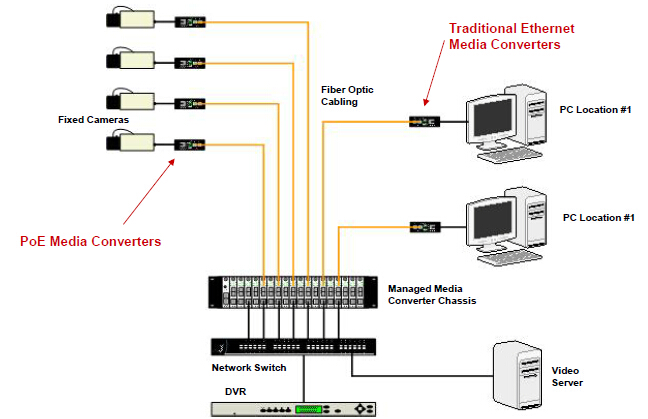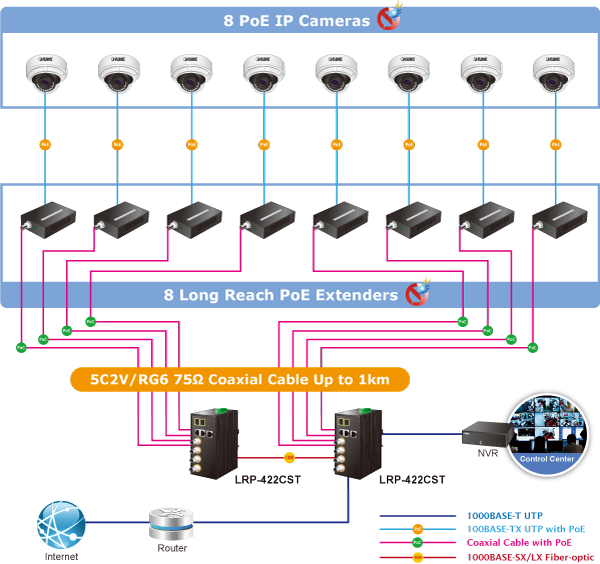The Key Benefits of Using CCTV Fibre Optic Cable for Reliable Surveillance
How CCTV Cameras With Fiber Optic Outcome Enhance Long-Distance Surveillance
CCTV video cameras furnished with fiber optic output represent a substantial development in long-distance monitoring technology, using exceptional advantages over conventional systems. By leveraging the homes of light transmission through fiber optics, these electronic cameras guarantee high-definition video clip quality stays undamaged across substantial ranges while efficiently minimizing electromagnetic disturbance. This innovation not only improves picture clarity but likewise enhances installation processes and resource allowance. As we discover the implications of this innovation, one must consider how these improvements are improving the landscape of security and monitoring systems in different applications.

Understanding Fiber Optic Innovation
Fiber optic innovation is significantly made use of in long-distance monitoring applications due to its outstanding capability for information transmission. This modern technology uses slim hairs of glass or plastic fibers to transmit data as light signals, substantially reducing the attenuation commonly related to traditional copper cable televisions. The fundamental homes of fiber optics permit the transmission of large volumes of data over substantial distances without loss of high quality, making it a suitable option for applications needing dependable interaction.
The concept of overall inner representation assists in the effective transmission of light within the fiber, guaranteeing high transmission capacity and speed. Unlike electrical signals in metal wires, fiber optics are unsusceptible to electromagnetic disturbance, enhancing the stability of information transmission. This characteristic is specifically important in settings with high levels of electric sound, such as industrial setups or urban areas.
In addition, fiber optic cable televisions are lighter and extra versatile than their copper equivalents, which simplifies installment and minimizes structural lots. With their durability and resistance to ecological factors, optical fiber are fit for exterior applications, therefore prolonging the reach of keeping an eye on systems. As a result, fiber optic innovation is becoming a cornerstone in modern-day monitoring services, properly resolving the difficulties of long-distance surveillance.
Benefits of Fiber Optic CCTV
Making use of fiber optic technology in CCTV systems supplies various benefits that boost monitoring capacities. One of the main advantages is the capacity to transmit high-definition video clip over fars away without considerable signal destruction. Unlike conventional copper wires, fiber optics can preserve video clip quality over substantial runs, making them perfect for big buildings or remote monitoring places.
Furthermore, fiber optic cables are less vulnerable to electromagnetic interference, which can distort signals in traditional systems. This makes sure more clear pictures and undisturbed solution, critical for safety and security surveillance. In addition, fiber optics are naturally extra safe and secure, as obstructing signals calls for customized tools, hence supplying an added layer of defense versus unapproved gain access to.
The light-weight and small nature of fiber optic cords likewise simplifies installation, enabling easier transmitting with tight rooms and minimizing general labor costs. Their durability makes them immune to ecological aspects such as moisture and temperature level fluctuations, extending the life-span of the monitoring system.
Finally, fiber optic systems can support a majority of electronic cameras on a single network, optimizing resources and supplying scalability for future growth. These benefits make fiber optic CCTV systems a premium option for modern security needs.
Contrast With Standard Systems
When contrasting CCTV systems, traditional configurations often drop short in numerous essential locations, especially in Visit Website regards to distance and signal honesty. Traditional coax cable systems commonly deal with substantial signal deterioration over fars away, restricting reliable monitoring ranges to about 300 feet (cctv fibre optic cable). Past this threshold, picture clarity decreases, bring about potential blind places and minimized surveillance efficiency
On the other hand, fiber optic systems maintain signal stability over a lot better distances, usually exceeding numerous miles without loss of high quality. This is greatly due to their capability to transfer information as light signals, which are much less susceptible to electromagnetic interference than electric signals made use of in traditional systems.
Additionally, standard systems need a lot more extensive maintenance and troubleshooting because of their vulnerability to environmental aspects such as dampness and electro-magnetic sound. Fiber optic systems, alternatively, deal improved toughness and reduced upkeep expenses, as they are much less susceptible to damages.
Applications in Long-Distance Surveillance
The advantages of contemporary CCTV systems in maintaining signal honesty over fars away open a vast array of applications for long-distance tracking. One significant application remains in city surveillance, where towns deploy fiber optic CCTV systems to keep an eye on public rooms, boosting security and discouraging criminal activity. These systems give constant, premium video feeds that are crucial for reliable legislation enforcement and emergency situation action.
One more essential application remains in industrial setups, where remote monitoring of making processes and hazardous locations is vital. click here now Fiber optic CCTV can stand up to severe settings and transfer information over long ranges without loss of quality, permitting real-time oversight and lessening risks to employees.
In addition, vital framework such as flight terminals, trains, and pipelines take advantage of long-distance CCTV surveillance. Security groups can oversee big areas from streamlined control areas, making certain fast feedback to any occurrences.
In addition, in agricultural settings, farmers utilize long-distance CCTV to keep an eye on crops and animals, aiding to improve performance and safety and security. Generally, the flexibility and dependability of fiber optic CCTV systems make them essential throughout various markets, making it possible for comprehensive monitoring remedies tailored to particular demands.
Future Trends in Security Technology
Just how will developments in innovation reshape the more information landscape of monitoring? The future of security technology is poised for considerable improvement, driven by technologies such as artificial intelligence (AI), artificial intelligence, and side computing. These technologies enable real-time data analysis, enabling fast recognition of prospective hazards and boosted situational recognition.
AI-powered analytics will improve the accuracy of facial recognition systems, reducing false positives and enabling much more effective tracking of people. The combination of Web of Things (IoT) devices will promote a smooth network of interconnected monitoring systems, enhancing surveillance capacities throughout vast locations.
One more pattern is the change in the direction of cloud-based storage remedies, which use scalable data monitoring and access. This will permit organizations to save huge quantities of video data without the constraints of physical storage, while making sure that info is easily retrievable.

Final Thought
In conclusion, CCTV video cameras furnished with fiber optic outcome stand for a substantial innovation in long-distance surveillance capabilities. As surveillance technology continues to develop, the adoption of fiber optic services will likely play an essential function in improving safety throughout diverse applications.